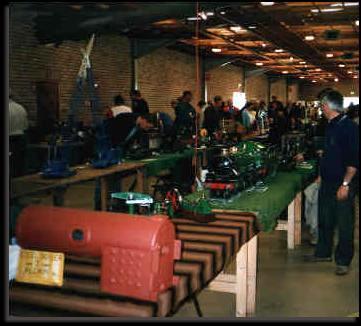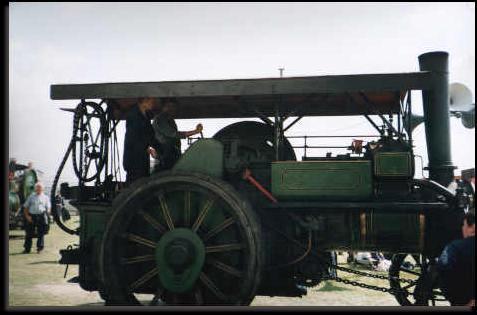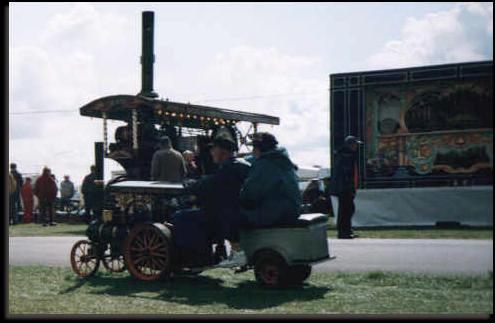|
A full STEAM ahead week-end ! |
|
|
A full STEAM ahead week-end ! |
|
|
Whereas I had nothing planned for the weekend of August 22 / 23 1998, Steve, a friend who lives in the county of Lincoln in England, proposed that I meet up with him at an unusual show... |
|
 |
This
show, which is held once per year very close to Lincoln, is the |
|
But what more particularly drawn my attention, and which was besides the principal attraction of this show, were impressive steam engines. |
|
First a bit of history...
|
The rapid growth of industry in Britain from about the mid-18th century (and somewhat later in various other countries) created a need for new sources of motive power, particularly those independent of geographic location and weather conditions. This situation, together with certain other factors, set the stage for the development and widespread use of the steam engine, the first practical device for converting thermal energy to mechanical energy. The foundations for the use of steam power are often traced to the experimental work of the French physicist Denis Papin. In 1679 Papin invented a type of pressure cooker, a closed vessel with a tightly fitting lid that confined steam until high pressure was generated. Observing that the steam in the vessel raised the lid, he conceived the idea of using steam to power a piston and cylinder engine. Thomas Savery, an English inventor and military engineer, studied Papin's work and built a steam-driven suction machine for removing water from coal mines. |
|
Savery's machine (patented in 1698) consisted of a boiler, a closed, water-filled reservoir, and a series of valves. Steam was introduced into the reservoir, and the pressure of the steam forced the water out through a one-way outlet valve until the vessel was empty. Water was then sprayed over the surface of the pressure cooker to condense the steam and create a vacuum capable of drawing up more water through a valve below. Unfortunately the vacuum created was not perfect, and so water could only be lifted to a limited height. |
|
|
OK, all this is extremely interesting, but how to explain the marked development of the steam engine in Great Britain, and this curious passion the English have for the pressure-cooker. Hum, sorry, steam engines. Britain, unlike its prime European rival, France, was a small, compact island. Except in northern Scotland, it had no major forests or mountains to disrupt or impede its internal communications.The country possessed a range of natural ports facing the Atlantic, plenty of coastal shipping, and a good system of internal waterways. |
|
|
By the 1760s there were already 1,000 miles of inland canals in Britain; over the next 70 years 3,000 more miles of canals were constructed. Britain was also richly endowed with coal and iron ore, and these minerals were often located close together in counties such as Staffordshire, Northumberland, Lancashire, and Yorkshire. |
|
|
We much better appreciate now the economic interest that the development of steam engines could cause in this country and why the English enjoy so much steam cooking! |

|
|
|
"Convertible Engine", meaning it can be used as either a traction engine for road haulage or with a different front end fitted as a road roller. |
| Make | AVELING & PORTER |
| Year built | Jannuary 1916 |
| Makers Number | 8679 |
| Registration Number | BT8812 |
| Weight as a Traction Engine | 11,5 tons |
| Weight as a Road Roller | 17 tons |
 |
Steve and me at the controls of the contraption. Towards the main place... |
|
Everybody converges on the same point. |
|
 |
And there were a lot of people, about 100 steam engines and over 1,000 other exhibits were present that day! |
|
Once everyone aligned, a commentator introduces the owner and his machine. |
|

|
There
were also the small sizes, the exact copy of their parents.
|
|

 |
More often than not, the owner of these replica made himself his baby! |
|
This splendid organ is powered with electricity thanks to the steam engine. |
|